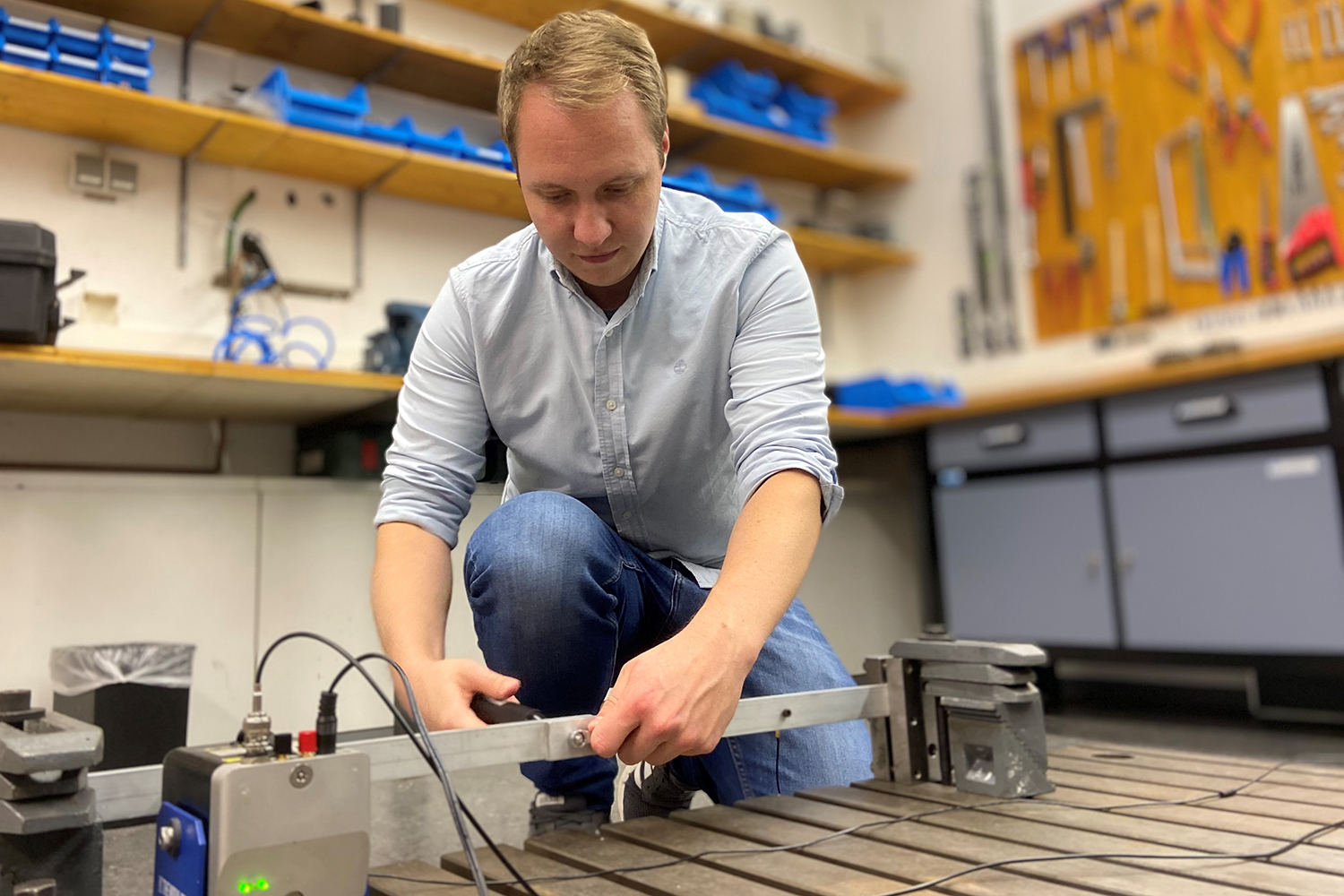Detecting damage to construction structures by vibrations A short portrait of Lukas Outzen from the Research Training Group 2075
How can aging processes in construction structures be predicted and monitored? In the Research Training Group 2075 ”Modelling the constitutional evolution of building materials and structures with respect to aging” of the Core Research Area “Future City”, young scientists are researching and developing new methods to investigate this. Lukas Outzen, research assistant at the Institute of Acoustics, is doing his doctorate in the Research Training Group on “Condition monitoring of vibrating structures using data-based modeling”. We introduce the doctoral student in a short portrait.

Lukas Outzen’s research is intended to help detect damage to structures as early as possible. Picture credits: Lukas Outzen/TU Braunschweig
Who are you and what is your research topic?
I am from Flensburg and studied industrial engineering with a focus on mechanical engineering at TU Braunschweig. During my studies, I was able to gain a lot of interesting experience in different research areas during semesters abroad and internships. I was particularly fascinated by the topic of data-driven modeling, which I worked on in my master’s thesis at the Institute for Acoustics. At the Research Training Group, I am now working on using this modeling approach to monitor the condition of structures.
Which research question are you working on?
I am trying to develop a machine learning approach that can be used to detect structural changes or damage as early as possible based on the vibrations of a structure.
What inspires you about your research?
I am excited to explore such a practically relevant topic with such great methodological freedom. The combination of computer-aided methods and experimental investigations gives me access to different exciting areas and makes my research very interesting.
Why is your topic relevant to the Future City?
The reliable detection of damage in structures before failure can prevent catastrophic consequences. The earlier structural changes are detected and resulting maintenance measures are carried out, the longer safe operation can be ensured. This contributes to the sustainability and operating efficiency of the Future City.
What is special about participating in the Research Training Group “Modelling the constitutional evolution of building materials and structures with respect to aging”?
The exchange with other doctoral students in the Research Training Group who are working on different aspects of the same basic problem is very helpful for my own research. Especially because of my background in mechanical engineering, it is important and exciting to gain insights into the diverse fields of civil engineering.
